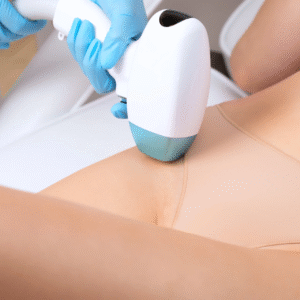Introduction: The Unsung Power of Ultrasound
When most people think of ultrasound scan services, the image that comes to mind is an expectant parent watching their baby appear on a screen. While prenatal ultrasound is a well-known use, it’s just the tip of the iceberg. In fact, ultrasound has become a vital tool for diagnosing a wide range of medical conditions across specialties—including cardiology, urology, orthopedics, gastroenterology, and more.
Non-invasive, safe, and widely available, ultrasound technology provides real-time imaging without the risks associated with ionizing radiation (unlike X-rays or CT scans). Thanks to advances in high-frequency probes and portable devices, its application continues to grow.
Below, we explore 7 surprising medical conditions that ultrasound scan services can help diagnose—potentially saving lives and reducing the need for more invasive or costly testing.
1. Cholecystitis or gallstones in the gallbladder
Finding gallstones or gallbladder inflammation is one of the most popular and successful applications of abdominal ultrasonography. About 10–15% of Canadian adults suffer from gallstones, which can lead to infection, vomiting, and excruciating pain if left untreated.
Physicians can swiftly determine whether surgery is required or whether symptoms can be managed conservatively by using ultrasound to detect bile duct dilatation, measure gallbladder wall thickness, and easily find stones.
Inclusion of Relevant Keywords: ultrasound scan services for diagnosing abdominal pain
2. DVT, or deep vein thrombosis
Blood clots that develop in deep veins, typically in the legs, are known as DVT. If treatment is not received, this dangerous condition can result in pulmonary embolism. The most reliable method for identifying DVT is venous Doppler ultrasonography.
Real-time blood flow visualisation is made possible by ultrasound, which may also detect anomalous vein compressibility, clots, and obstructions. The scan is quick, painless, and can save lives when prompt action is required.
Stat: Up to 60,000 Canadians experience DVT annually, according to the Canadian Thrombosis Society.
3. Goitres and Thyroid Nodules
Particularly among women over 30, thyroid disorders are becoming more prevalent. Thyroid gland size, structure, and the existence of nodules or cysts can all be assessed using a neck ultrasound.
Without exposing patients to radiation, high-resolution imaging allows physicians to differentiate between solid and fluid-filled nodules, direct fine-needle aspiration (FNA) if necessary, and track changes over time.
Commercial Relevance: When public system wait times cause delays in diagnosis, clinics such as Why Wait Imaging offer prompt thyroid ultrasound scan services.
4. Obstructions of the urinary tract and kidney stones
Although kidney stones can also be seen with CT scans, renal ultrasonography provides a radiation-free option, especially for youngsters or recurrent instances. It is able to recognise:
Hydronephrosis, or kidney swelling brought on by obstruction
Big or blocking stones
Tumours or cysts in the kidneys
In individuals with neurological disorders or prostate problems, it is also commonly used to track bladder emptying or retention.
Included SEO Keyword: ultrasound scans for disorders of the kidneys and bladder
5. Liver Disease and Fatty Liver (NAFLD)
As rates of non-alcoholic fatty liver disease (NAFLD) continue to rise, especially among adults with diabetes or obesity, ultrasound has become a front-line tool for detection. It helps identify:
-
Liver enlargement
-
Texture changes (suggesting fibrosis or cirrhosis)
-
Fatty infiltration
According to the Canadian Liver Foundation, nearly 1 in 4 adults in North America now have some form of fatty liver disease, often without symptoms. Early detection through abdominal ultrasound can lead to lifestyle changes and better outcomes.
6. Testicular Torsion or Masses
In emergency urology, scrotal ultrasound is essential for evaluating testicular pain, swelling, or masses. It helps diagnose:
-
Testicular torsion (a surgical emergency)
-
Epididymitis
-
Varicoceles
-
Benign or malignant tumors
Using color Doppler, clinicians can evaluate blood flow to determine if the testicle is viable or if immediate intervention is required.
Fast Fact: Torsion is most common in adolescent males, and ultrasound can confirm the diagnosis within minutes.
7. Joint and Soft Tissue Injuries
Many people don’t realize that musculoskeletal ultrasound (MSK) is used to evaluate tendons, ligaments, muscles, and even joint fluid. Common conditions include:
-
Rotator cuff tears
-
Achilles tendonitis
-
Joint effusions
-
Carpal tunnel syndrome
-
Plantar fasciitis
Unlike MRI, ultrasound allows dynamic assessment—you can move the joint during the scan to better visualize function and abnormalities. It’s cost-effective, fast, and often used in sports medicine and orthopedic care.
Commercial Keyword Fit:
ultrasound scan services for sports injuries or orthopedic diagnostics
The Value of Timely Access: Public vs. Private Imaging
In Nova Scotia and other provinces, long wait times for diagnostic imaging are a growing concern. According to the Nova Scotia Health Authority, non-urgent ultrasound wait times can stretch beyond 100 days in some regions.
This is where private providers like Why Wait Imaging offer a patient-centered solution. With shorter booking times, advanced diagnostic equipment, and expert radiologists, patients gain peace of mind without delay.
Final Thoughts: Ultrasound Beyond the Womb
Ultrasound technology has expanded far beyond its well-known role in prenatal care. From urgent vascular diagnoses to evaluating soft tissue injuries or thyroid health, ultrasound scan services are a critical part of modern diagnostic medicine.
Accessible, safe, and fast—ultrasound is helping more Canadians get answers when it matters most.






